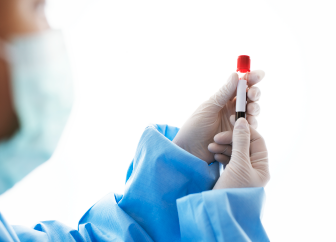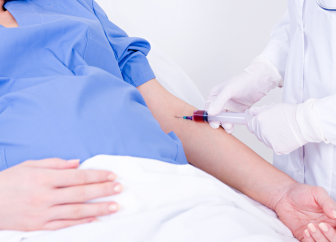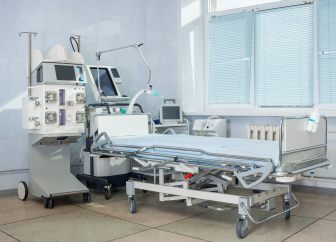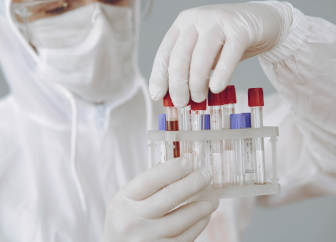Overview
A bone marrow transplant is a medical procedure that infuses healthy blood stem cells in the body to replace impaired/deficient or contaminated bone marrow. When the body is unable to produce the requisite amounts of healthy blood cells, a bone marrow transplant procedure may be necessary. You might need to consult a bone marrow transplant doctor in bangalore or the city where you reside for bone marrow transplantation. A bone marrow transplantation may be used to restore a new immune system in the body so as to fight against diseases like blood cancer after adequate control with chemotherapy or even replace the bone marrow if it is not producing blood cells or producing defective blood cells.
Types of Bone Marrow Transplant
Bone marrow transplant covers three broad categories of bone marrow treatment. Depending on the source of the bone marrow for the transplant, the types of bone marrow transplants can be divided into:
Autologous Bone Marrow Transplant:
During this procedure, the patient is the source of the bone marrow. After adequate control of the disease, the patient’s own blood stem cells are harvested from peripheral blood and given as rescue therapy after myeloablative chemotherapy is given to destroy the malignant cells found in multiple myeloma, lymphoma, etc.
Allogeneic Bone Marrow Transplant:
For this procedure, the bone marrow is harvested from a donor after appropriate testing. Based on the type of donor and the degree of HLA match, they are again broadly classified into three categories:
- Matched family donor: Here the siblings who are 10/10 HLA match with patients are selected. This is the most preferred type of donor for all BMT, however, there is only a 30% chance of finding such a match within the family.
- Matched Unrelated donor: Here the individuals who are unrelated to the donor but have a 10/10 HLA match are selected through the stem cell registries. The chance of finding such a donor for Indian patients is less than 20%, and additional costs are also involved.
- Haplo-identical donor: Here the biological parents or siblings who are a half match (5/10) to the patient are selected as donors. It is usually done through two methods:
- T cell replete: Cyclophosphamide is used post-transplant to get rid of the unwanted T cells in the patient’s body after infusion.
- T cell depletion: Here, the unwanted T cells are removed before infusion through the Clinimac machine using immune-magnetic beads.
Umbilical Cord Blood Transplant:
It is another kind of bone marrow transplant that uses cord blood stem cells extracted at the time of a baby’s birth as a source of blood stem cells. The stem cells from the umbilical cord blood may be used in combination with bone marrow stem cells to perform a bone marrow transplant in a patient. It has fallen out of favour due to several reasons.
Your haematology team at SPARSH Hospitals must plan a lot prior to performing a bone marrow transplant. Your team of specialists will sit through multiple sessions, explain the various processes, and answer any questions that you may have. Once the treatment begins, your transplant team will help you and your family by providing physical and emotional support throughout the entire process.
Our Diagnostic Services
Pre-transplant Tests and Procedure Here is a list of tests (according to the institutional practices, underlying disease and type of BMT) that has to be carried out for both the patient and donor to assess their condition prior to BMT and to provide fitness for the same. It includes high-resolution HLA typing, CBC and organ function tests, infective screening, etc.
Collecting Stem Cells for Transplant
For Autologous Transplant
To collect stem cells in the case of an autologous stem cell transplant, you will receive daily injections (GCSF) to expedite the production of stem cells. The injection also starts moving the stem cells into your bloodstream, which will make the collection process easier. This process will be followed by a procedure known as apheresis, in which blood is drawn from your vein. A machine is then used to circulate the blood, which separates it into various parts, such as stem cells. This is done after adequate control of the underlying disease like Myeloma or Lymphoma.
For Allogeneic Transplant
In an allogeneic transplant, blood stem cells can be collected from a donor through two methods: stem cell harvest or bone marrow harvest. In a stem cell harvest, stem cells are taken directly from the donor’s blood. In a bone marrow harvest, bone marrow is extracted from the donor.
- Bone marrow is usually done in benign cases like thalassemia and aplastic anaemia. It is usually done in OT under general anaesthesia.
- Peripheral blood – here, the blood stem cells are mobilised from the bone marrow to the peripheral blood and then harvested through venous access. It is the most common type of blood stem cell harvest.
The Conditioning Process
During this phase, patients will be going through high-dose chemotherapy and/or radiation that will help to destroy the cancerous cells, subdue their immune system, and prepare their bone marrow to accept the new stem cells.
Undergoing the Bone Marrow Transplant
Day zero, which is the day you complete the conditioning process, is also the day when your body is infused with the stem cells. During the infusion process, there’s no need for sedation as the procedure is painless. Post the infusion,the stem cells travel to the bone marrow and start generating new blood cells. However, bear in mind that it may take several weeks for the creation of the new blood cells and for your blood counts to start recovering. The preservative component in the thawed bone marrow or blood stem cells may cause some side effects like:
- You may experience headaches.
- You may feel nauseous.
- You may experience shortness of breath.
- You may observe an unpleasant taste in your mouth.
These side effects may vary from patient to patient. You may be administered IV fluids to reduce the effects of the preservative.
After your Bone Marrow Transplant
After the infusion of the stem cells, they start travelling through your body towards the bone marrow to produce new and healthy blood cells. This process is called engraftment. Many more blood tests will follow, and your health condition will be closely monitored. The objective of the bone marrow transplant is to restore normal blood cell production in order to heal your body of certain critical diseases and put the cancerous cells into remission.
The success of the transplantation procedure will largely depend on multiple factors, primarily the experience of the treating team. Going through these diagnostic screenings, tests, and procedures takes a toll on you both physically and mentally.
Speak to your transplant specialist at SPARSH Hospitals, who will be happy to answer all your queries. The goal for us at SPARSH Hospitals, through the bone marrow transplantation process is to either cure or control the critical condition that is ailing your body, prolong your lifespan, and help you recuperate into a healthy lifestyle.
An Innovative Approach to Treatment
- State-of-the-art therapy for all haematological disorders
- Daycare BMT services to eligible patients with multiple myeloma
- State-of-the-art BMT rooms with HEPA filters as per international standards
- Haploidentical BMT Services including T-cell Depleted and Immunotherapy Services
Bone Marrow Transplant Treatment We Provide:
- Haemophilia
- Primary Immunodeficiency Disorders
- Wilms’ Tumour
- Neuroblastoma
- Soft Tissue Sarcoma
- Retinoblastoma
- Paediatric Solid Tumours
- Haematological Malignancies like Leukaemia, Lymphoma, Myeloma
- Thrombotic Disorders
Why Choose Sparsh Hospital
Bone marrow transplants at SPARSH Hospitals are performed with the utmost precision and supervision by a specialist team of oncologists who are some of the best minds in the business today. We concentrate on excellence, and that’s why we collaborate and consult your case with a hig.hly skilled team of clinical haematologists, surgical and medical oncologists, and doctors from allied disciplines, along with expert practice nurses who participate in the transplant process. At SPARSH Hospitals, our doctors have several years of experience performing bone marrow transplants for both adults and children to battle a number of cancerous and non-cancerous conditions. Such an extensive history of performing bone marrow transplants at SPARSH Hospitals only proves that our specialists are experienced and trained with the know-how and skill to deal with the most critical cases with professional and personalised care. Bone marrow transplant is certainly an option for treatment for patients who have been diagnosed with these conditions. However, you will have lengthy consultations along with extensive diagnostic screenings before your specialist at SPARSH Hospitals will recommend this procedure.
An Innovative Approach to Treatment

State-of-the-art therapy for all hematological disorders

Daycare BMT services to eligible patients of multiple myeloma

State-of-the-art BMT rooms with HEPA filters as per international standards

Haploidentical BMT Services including T-cell Depleted and Immunotherapy Services
We Specialise in the Treatment of
- Hemophilia
- Primary Immunodeficiency Disorders
- Wilms’ Tumour
- Neuroblastoma
- Soft Tissue Sarcoma
- Retinoblastoma
- Paediatric Solid Tumors
- Hematological Malignancies like Leukemia, Lymphoma, Myeloma
- Thrombotic Disorders


